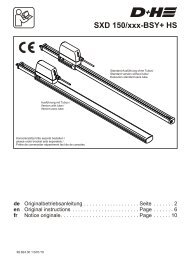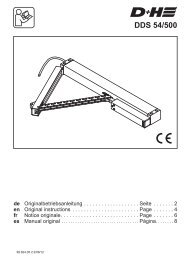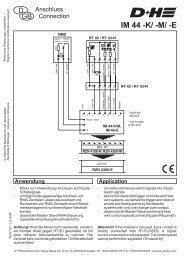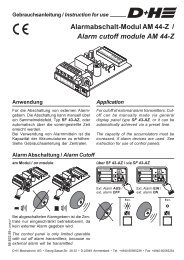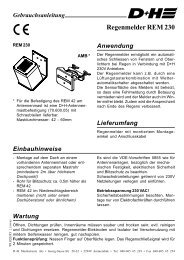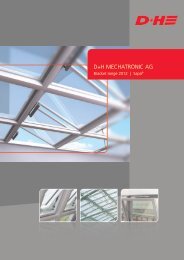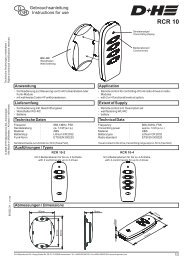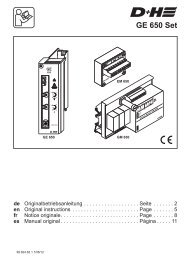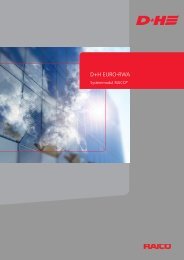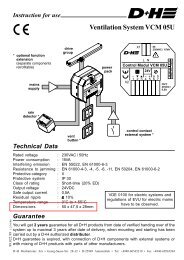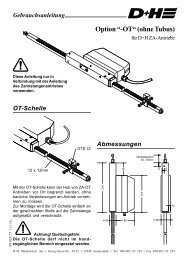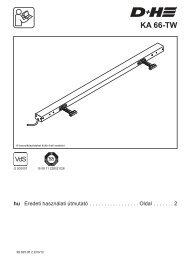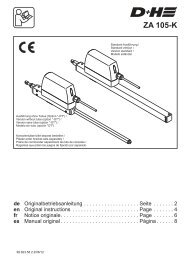Smoke ventilation according to EN 12101-2 - D+H Mechatronic
Smoke ventilation according to EN 12101-2 - D+H Mechatronic
Smoke ventilation according to EN 12101-2 - D+H Mechatronic
You also want an ePaper? Increase the reach of your titles
YUMPU automatically turns print PDFs into web optimized ePapers that Google loves.
2.1.5. Testing the resistance <strong>to</strong> heatIn the resistance <strong>to</strong> heat test, the NSHEV is mounted on a test furnace that is heated from room temperature <strong>to</strong>300°C within 5 minutes. After this heating-up phase during which optional thermal actua<strong>to</strong>rs are deactivated <strong>to</strong>prevent premature actuation, the NSHEV is actuated and must be driven <strong>to</strong> the fully open smoke vent positionwithin 60 seconds. The NSHEV must remain in position for a further 25 minutes.The test is passed if the aerodynamic free area has been reduced by a maximum of 10% after the entire periodunder load of 30 minutes. If the area has been reduced <strong>to</strong> a greater extent, the test is not passed, as not enoughsmoke can be vented from the building in an emergency.2.1.6. Testing the aerodynamic free opening areaVarious measurements are performed on the NSHEV where NSHEVs in the facade are used <strong>to</strong> extract smoke fromthe building. In particular, the static pressure and the atmospheric pressure are measured at different pressureratios (Pa) at different NSHEV opening angles.The coefficient of discharge Cv or Cv0 required by <strong>EN</strong> <strong>12101</strong>-2 is then determined by means of a formula thattakes in<strong>to</strong> account the measurement results for the flow and pressure as well as the geometric area of theNSHEV. The aerodynamic free opening area A acan then be calculated for the NSHEV.Section A21



